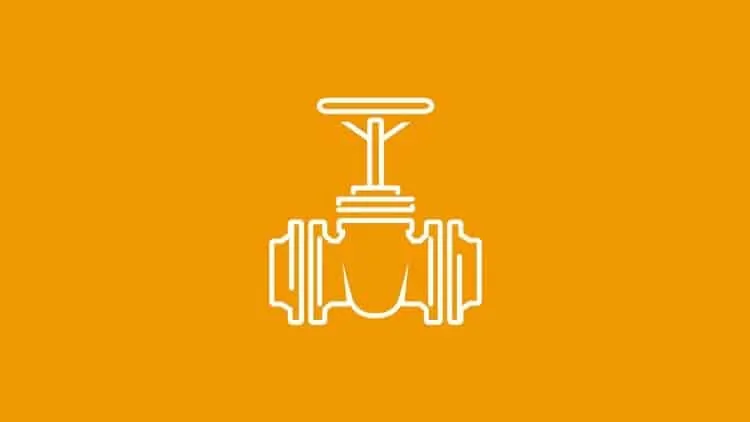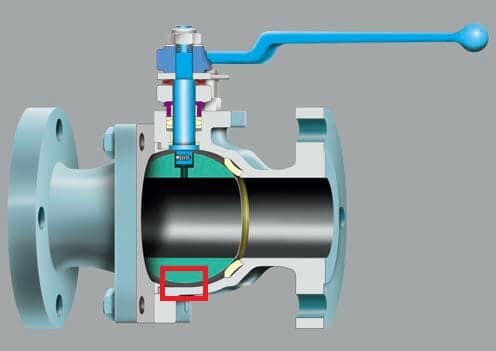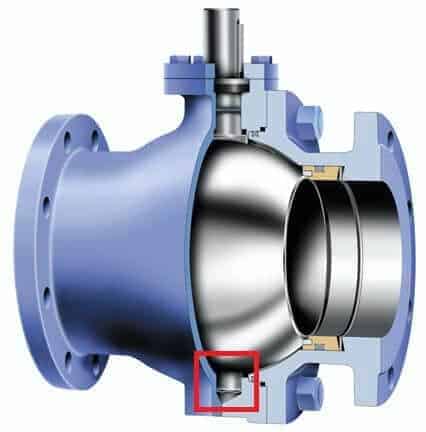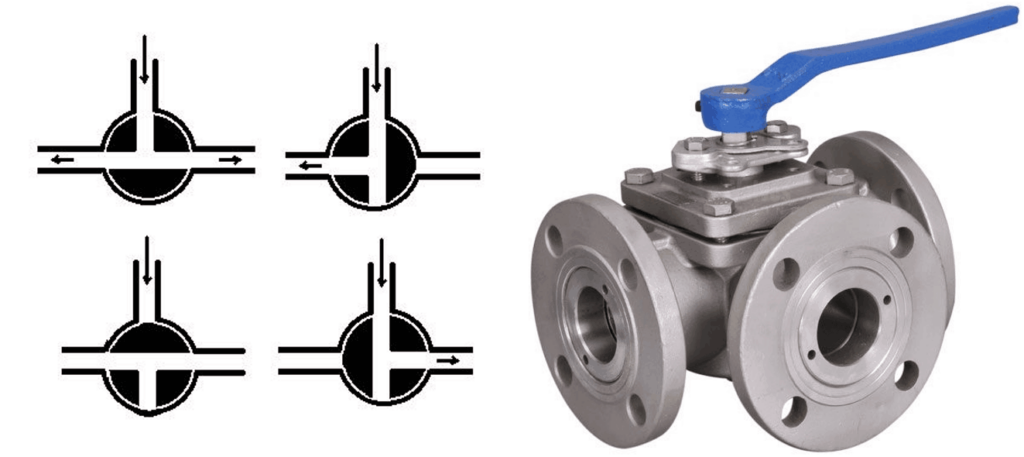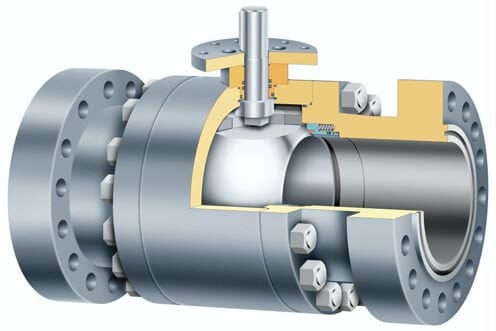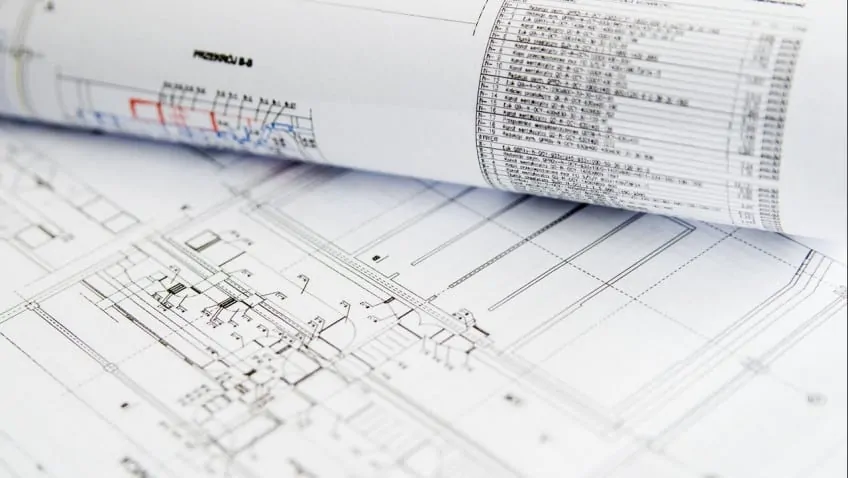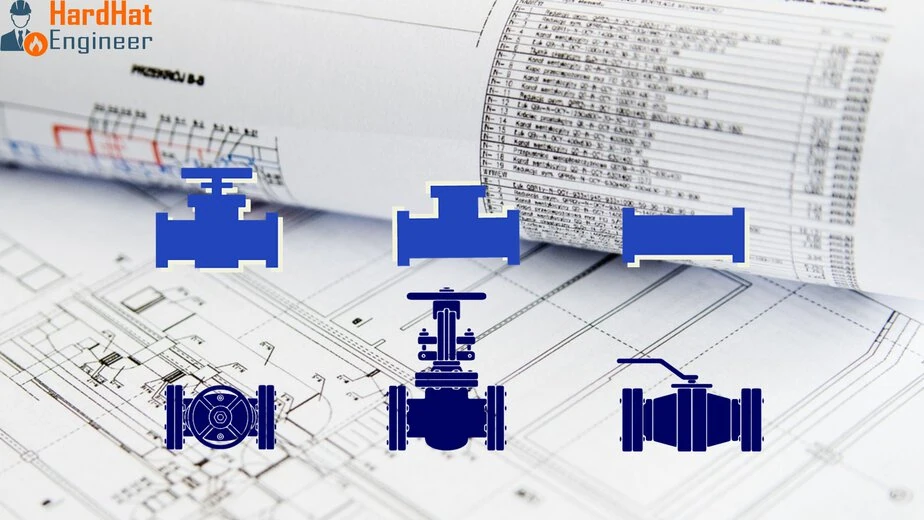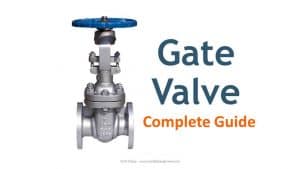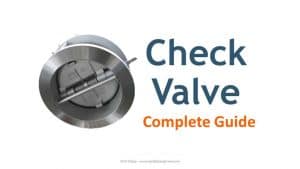A Ball valve is a quarter-turn rotary motion valve that uses a ball-shaped disk to stop or start the flow. It resembles a plug valve in many ways. When a port in the ball is in line, it allows flow, whereas when you rotate the valve 90 degrees, the solid part of the ball stop the flow.
Most ball valves are quick-acting, requiring a 90° turn of the valve handle to operate the valve. But in case a large size valve, which requires considerable force to open or close the valve, the gear-operated actuator is used. With this arrangement, a small handwheel is enough to operate a fairly large valve.
In this article, I have covered the following types of Ball Valves that are used in piping.
- Floating
- Trunnion Mounted
- 3 Way
- Top entry
- Side entry or split body
- Three-piece body
Check this video for a better understanding of these topics.
Unlock New Skills with Our Best Selling Online Courses
Floating Ball Valve
In a floating ball valve, the ball is held in the position by the compression of the two elastomeric seats against the ball. The ball is free to float inside the valve body. See the highlighted portion in the image and remember that you will see the difference when I explain the trunnion-mounted valve.
The stem is connected to a slot at the top of the ball, which allows the ball to rotate a quarter turn (90 degrees). The shaft allows for a certain amount of lateral movement of the ball that is generated from the upstream pressure acting on the ball. This small lateral movement, in fact, produces a load on the ball that presses it against the downstream seat, improving the leak tightness of the valve. This type of valve design is capable of bi-directional shut-off. The floating valve is very difficult to operate when upstream pressure is high. You can see the image of a floating type valve.
Check the video below to learn how this floating-type valve works.
Valve Quiz – Test yourself, Take This Quiz
Trunnion Mounted Ball Valve
Trunnion mounted valve is a solution to the problem of excessive torque required by a floating type valve in high-pressure service. A short shaft is like an extension which is known as a trunnion set in the body. You can see this in the image. In this design, steam and ball work as a single unit. The ball is supported by two floating or spring-loaded seats that remain in constant contact with the ball.
Image – TROUVAY & CAUVIN
Trunnion ball design required a lower operating torque. Hence, it reduces the actuator’s size and the valve’s overall costs. This cost difference becomes important when the pressure class and valve size increase. Check the video below for an animation of this type of valve.
Check this video to know how Trunnion Mounted Ball Valve works.
3 Way Ball Valve
Depending on your requirements, you can arrange the port of the valve in the three-way.
- One inlet and two distribute
- One inlet and one outlet with diverting a flow
- Straight pass the fluid without inlet
Three patterns are available. Venturi port type, full port type, and reduced port type. The full-port ball valve has an inside diameter equal to the inside diameter of the pipe. This design allows pigging. In the venturi and reduced-port types, the port is generally one pipe size smaller than the line size.
The ball-type disc can be a free float or fixed in the valve body. A free-floating valve is known as a floating type, whereas a fixed type valve is known as a trunnion-mounted valve.
Image – TROUVAY & CAUVIN
Types of Ball Valves based on Body Construction
Ball valves are manufactured in different body arrangements. Based on this valve can be classified in the following ways;
- Top entry
- Side entry or split body
- Three-piece body
The full welded body is also used for extremely high pressure and temperature services.
Top-Entry Ball Valve
Image – TROUVAY & CAUVIN
As you can see in the image above, removing the bonnet cover of top entry valves allows access to valve internals for assembly, disassembly, repair, or maintenance without removing the valve from the pipeline.
Split-Body Ball Valve
In this design, a valve body is divided into two or three body parts. A ball, seat rings, stem, and other internals are set inside the larger body part and held together with smaller parts by bolting.
For a split body, two pieces valve, refer to floating ball valve image. Refer to the below image for a split body three pieces type valve.
Image – TROUVAY & CAUVIN
Unlock New Skills with Our Best Selling Online Courses
Ball Valve Parts
Major components of the valve are the body, spherical ball, steam, and seats. It can be metal seated or soft seated. This valve may be unidirectional, bidirectional, or multidirectional, depending on the number of valve ports and the number of valve seats. Same as multiport plug valve. In the image below, you can see the 3-way ball valve.
Applications of the Valve
- It can be used in different types of fluid services as an on-off stop valve that provides bubble-tight shutoff.
- It can be used in air, gaseous, and vapor services as well as hydrocarbon services.
- Metal seated valves can be used in high-pressure & temperature applications.
- it is widely used with instrument tubing to connect instruments.
Advantages
- It is a quick open and close type that provides bubble-tight reliable sealing in high-pressure temperature applications.
- It is smaller and lighter than a gate valve of the same size and rating.
- Several designs of ball valves offer the flexibility of selection so that you can choose the valve that suits your requirements.
- Easy to operate and Cost-effective maintenance.
Disadvantages
- It cannot be used in services that require throttling.
- In slurry or other similar applications, the suspended particles can settle and become trapped in body cavities causing wear, leakage, or valve failure.
- Due to rapid opening and closing, surge pressures may arise, damaging downstream equipment.
Click here to learn about Other Types of Valve
Unlock New Skills with Our Best Selling Online Courses
